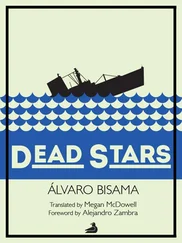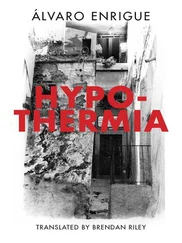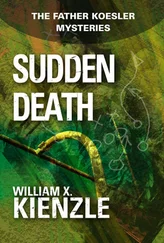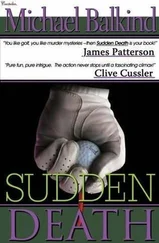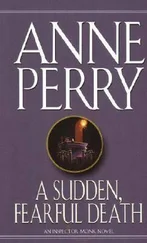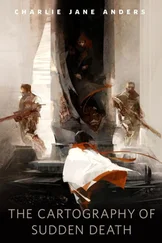The duke never said much about the afternoon he spent with Juana Cortés on the eve of his wedding, but he came out of the garden room in a different frame of mind: more serious, and somehow liberated. He had learned that there’s no point worrying about one’s fate, because all paths lead to defeat: nothing is ever enough for anyone.
That night he took the scapular out from his shirt to show Catalina. They were bidding each other farewell after dining with the family members who had arrived at the Palacio de los Adelantados to attend the festivities. She looked at it with surprise. Odd that she gave it to you, she said. The duke shrugged his shoulders. It’s a horrible thing, really, he replied. It was a rectangle woven of very fine, strong black thread. Worked into it was a figure that could no longer be identified. What is it, he asked his betrothed. A virgin of Extremadura, the Virgin of Guadalupe; the Indians made it for him; if you put it up to a candle it shines with a light of its own. Osuna approached a candelabra and couldn’t see anything. He tilted the scapular until the slant of the light made it glow: immediately he recognized the figure of a virgin in a blue robe, surrounded by stars. So brilliantly iridescent was the thing that the image seemed to move. He let it fall, frightened. Will it burn me? Don’t be an idiot, his future wife said. She took it and made it shine again. It looks like this because it’s made of feathers, she explained. Feathers? Bird feathers; that was how they made the images, so they would shine.
He tucked the scapular back into his shirt. He had to go and rest before the banquets began. He bowed. Before he could retire, Catalina asked again what he had spent so long talking to her mother about that afternoon. Your grandfather, a huge garden, Cuernalavaca. The future duchess corrected him: Cuernavaca. I’ll walk with you to the hall, she added. They went down the stairs arm in arm. As they were approaching the door where they would part for the last time before they were married, Osuna asked with sincere and perhaps slightly alarmed curiosity: So what does it mean to xingar , would you say?
A Council Is Wagered and Won

Giovanni Angelo Medici was a practical man. The son of a notary from the north of the Italian peninsula with no ties whatsoever to the family of the grand duchy of Florence, he governed the Papal States with diplomacy, restraint, and a low profile: qualities valued in the Renaissance era, which it was his lot to bring to a close. He greatly appreciated the gift that he was sent by his friend and counterpart, Philippe de Chabot, minister plenipotentiary for Francis I of France. He kept the fourth Boleyn ball in his desk, tossing it from hand to hand when he received someone with whom he had complicated business, as if to suggest that they should wrap things up quickly.
Just a few years after Giovanni Angelo Medici received the ball, his elder sister married a brother of Pope Paul III, and now nothing could slow his rise up the ecclesiastical ladder: he was the only member of the Curia who maintained equally smooth relations with the king of France and the Holy Roman Emperor Charles V of Spain.
In 1545 he was named archbishop of Ragusa and in 1549 he became a cardinal. All this despite the three conspicuous illegitimate sons who accompanied him everywhere. Ten years later, he was elected Pope Pius IV. He was appointed as a compromise, certain to last only a short time in the Vatican seat — here, too, he failed to heed expectations.
In addition to being a great manager, a politician untouched by defeat, and a bulldog for the election of his allies, Giovanni Angelo Medici was a lover of tennis. Even when he was pope he played senile doubles matches with his sons, and before that, when he was head of the Papal States and bishop of Ragusa, he was often seen at street games of pallacorda , red with enthusiasm and betting heavily on his three young bucks.
Relaxed to the point of corruption with his friends, implacable in the pursuit of his enemies, charming even when issuing death sentences, Giovanni Angelo Medici was the key figure in the transition to the Counter-Reformation and its splendid Baroque art.
In 1560 he named Carlo Borromeo bishop of Milan, making him the new model for the high clergy: he was curt and lean like a Franciscan but possessed a sophisticated education and was capable of navigating the turbulent waters of court receptions unscathed. Borromeo was an insufferable fanatic, but he was also very charismatic and never demanded anything of anyone that he wouldn’t do himself, which meant that he was the most persuasive of the agents of the new morality and the new aesthetic, dripping with the asceticism and glassy-eyed stare demanded by an age of great ecclesiastical revolution.
Pius IV named Carlo Borromeo bishop of Milan because of the great shrewdness he had shown in his first assignment as papal secretary. It was an undertaking that until his appearance was deemed hopeless: restarting talks at the Council of Trent.
In the ten years during which Trent was on hold, the disagreements between the Spanish and French cardinals had become so extreme that the only way of bringing them back together was to promise that the Council would begin again from zero. It was no wonder: this was the decade when Charles V quit his position as the most powerful monarch of all time, leaving the Holy Roman Empire split in two and the throne of Spain under the buttocks of his son Philip II, who never understood that the whole business of the defense of Catholicism was a charade. The king of France was a Protestant boy who had converted to Catholicism solely for political reasons. England and the northern principalities of Germany, whose cardinals had attended the first session of the Council even though they had already broken with Rome, had simply lost interest; they were perfectly happy being simply Christians, and even turning a profit from it. There were no cardinals who could mediate between the envoys of the new kings of Spain and France.
Carlo Borromeo convinced both parties that Pius IV would wipe the slate clean once they sat down around the table at Trent. At the first session His Holiness began, “As we were saying yesterday…,” and the discussion grew so heated so quickly that on the second day, when the pope insisted that they start from scratch, the cardinals rebelled and demanded that they follow the order of the day as they had left it the previous afternoon.
The council’s final act was no less politically deft. When Borromeo and Pope Pius judged that the cardinals were simply going around in circles, the office of His Holiness — without informing anyone beforehand — released a bull, Benedictus Deus , which listed the council’s conclusions and urged bishops everywhere to submit to its dictates.
There were, of course, mutinous cardinals who wanted to go on with the talks. There were even some who refused to accept that sensitive questions should remain open, to be codified later in a new catechism. Pius wore them down with pastries, wine, meaningful smiles, and, to be frank, barely veiled threats: never since the Rome of the Caesars had so many ditherers been executed. I believe, said Pius IV to those who refused to sign his acts — this after feting them marvelously — that you should speak to our dear friend Cardinal Montalto.
Montalto was the most bloody-minded of his inquisitors, the most bitter opponent of seeking everyone’s agreement — Utter hogwash! Is there not a captain aboard the ship? — and the most fervent defender of the idea of finally writing a catechism that would allow him to burn all Europe at the stake.
Читать дальше


